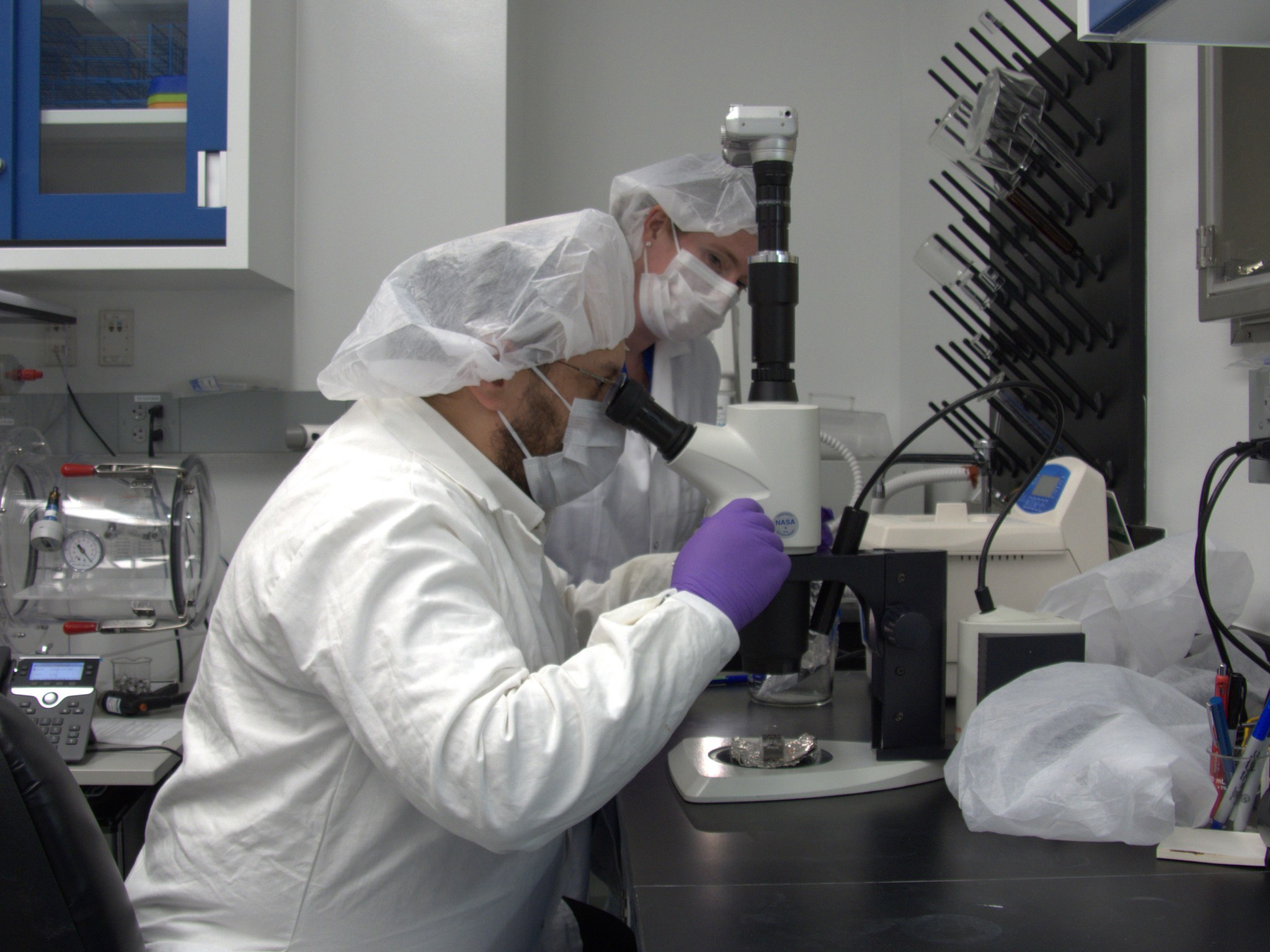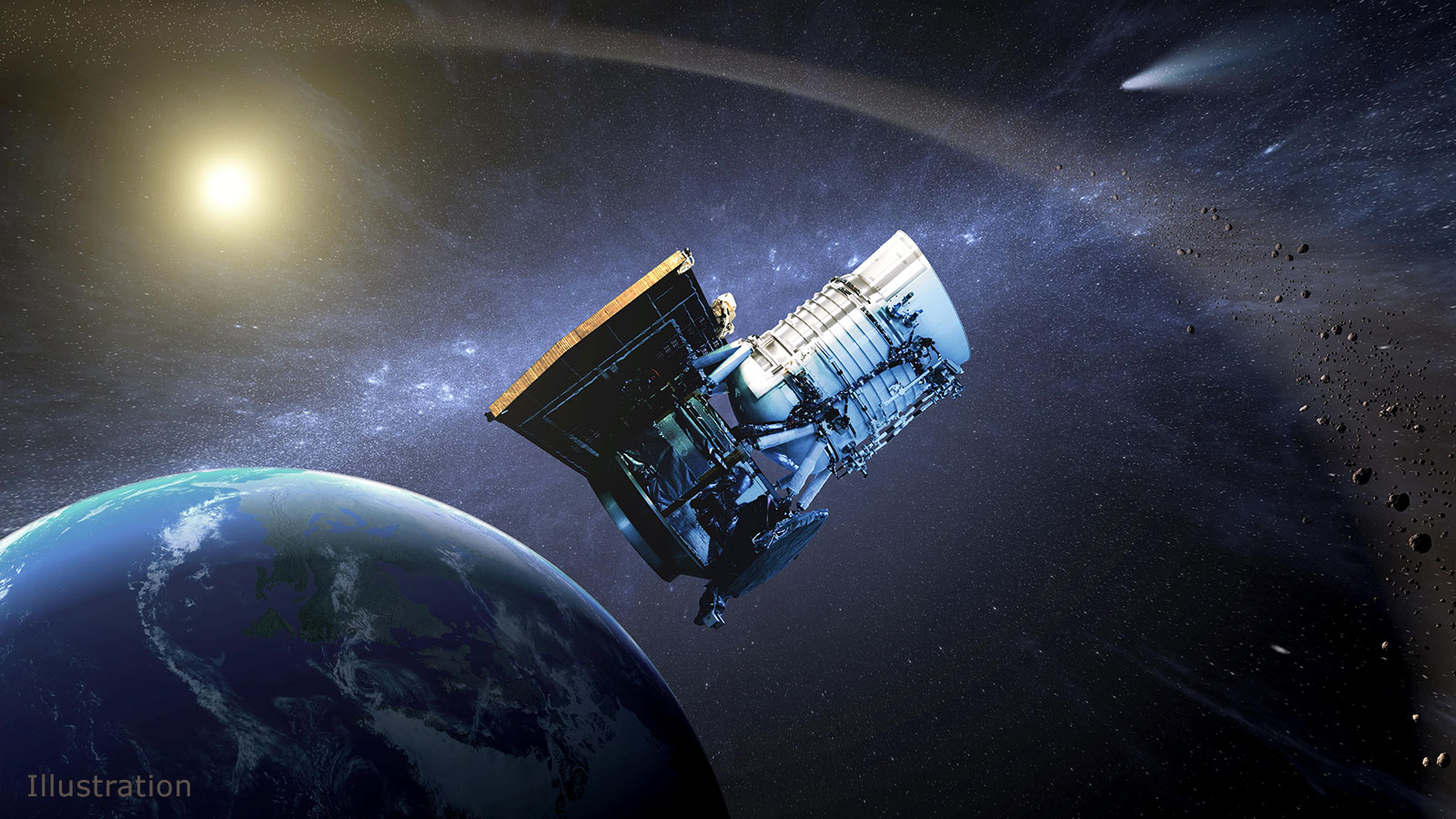Jason Dworkin, project scientist for OSIRIS-REx at NASA’s Goddard Space Flight Center in Greenbelt, Maryland, views a portion of the asteroid Bennu sample in the center’s astrobiology lab under microscope in November 2023, shortly after it arrived from the curation team at the agency’s Johnson Space Center in Houston. Credit: NASA/Molly Wasser NASA will brief media at 11 a.m. EST Wednesday, Jan. 29, to provide an update on science results from NASA’s OSIRIS-REx (Origins, Spectral Interpretation, Resource Identification, and Security – Regolith Explorer) mission, which delivered a sample of asteroid…
Read MoreTag: Near-Earth Asteroid (NEA)
NASA’s Planetary Radar Tracks Two Large Asteroid Close Approaches
The Goldstone Solar System Radar, part of NASA’s Deep Space Network, made these observations of the recently discovered 500-foot-wide (150-meter-wide) asteroid 2024 MK, which made its closest approach — within about 184,000 miles (295,000 kilometers) of Earth — on June 29. NASA/JPL-Caltech The Deep Space Network’s Goldstone planetary radar had a busy few days observing asteroids 2024 MK and 2011 UL21 as they safely passed Earth. Scientists at NASA’s Jet Propulsion Laboratory in Southern California recently tracked two asteroids as they flew by our planet. One turned out to have…
Read MoreNASA’s NEOWISE Extends Legacy With Decade of Near-Earth Object Data
6 min read Preparations for Next Moonwalk Simulations Underway (and Underwater) This artist’s concept depicts the NEOWISE spacecraft in orbit around Earth. Launched in 2009 to survey the entire sky in infrared, the spacecraft took on a more specialized role in 2014 when it was reactivated to study near-Earth asteroids and comets. NASA/JPL-Caltech As the infrared space telescope continues its long-duration survey of the universe, it is creating a unique resource for future astronomers to make new discoveries. NASA’s NEOWISE mission has released its 10th year of infrared data –…
Read MoreNASA’s NEOWISE Celebrates 10 Years, Plans End of Mission
NEOWISE is depicted in an artist’s concept in front of an image of the infrared sky that the mission captured. The string of red dots moving across the sky near the center of the image is Holda, the first asteroid the space telescope detected shortly after being reactivated in 2013. NASA/JPL-Caltech The asteroid and comet-hunting infrared space telescope has gathered an impressive haul of observations, but it’s now at the mercy of the Sun, which is accelerating its demise. NASA’s NEOWISE has had a busy decade. Since its reactivated mission…
Read More

